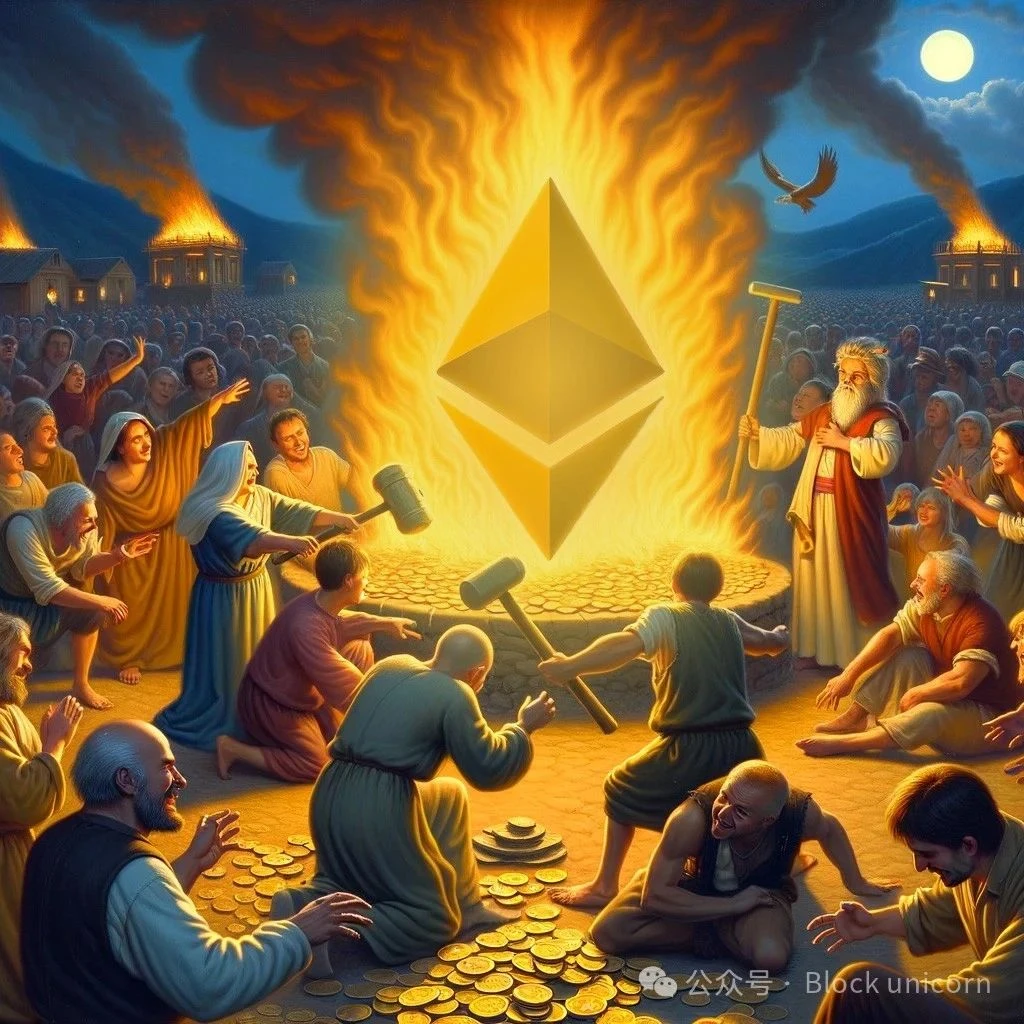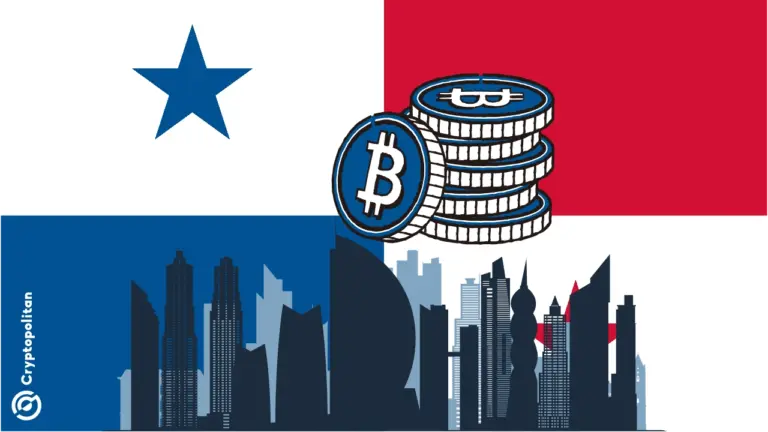Lost Ethereum: Finding New Life in Reform
Original author: Dr Martin Hiesboeck
Original translation: Block unicorn

At Uphold Institutional, we do have a lot of clients with large investments in Ethereum, so I’m currently inundated with questions about the future of this original smart contract network, especially in the face of strong competition from Solana and other L1 chains.
Today, Ethereum does seem to have lost its way. Prices are struggling, big players are exiting or moving to Solana; Ethereum’s weekly meetings are filled with conflicting proposals, and “Hannibal” is indeed at the door: never before have so many L1 chains directly competed with Ethereum, not only with Ethereum itself, but also challenged Ethereum’s vision and business model.
Make no mistake: Ethereum has become a business. Revenue comes from transactions, and while we’ve been told repeatedly that low transaction costs are in everyone’s interest, that’s simply not the case. People who own ETH want high fees. They’re frustrated about letting parasitic L2s (ostensibly created to solve scalability issues) eat into their profits. Fees go up, ETH price goes up. Fees go down, ETH price goes down. Over 90% of the Ethereum Foundation’s budget depends on Ethereum transaction fees. It’s a consensus that blockchain networks need fees — despite many examples of fairer incentive models. Ethereum is stuck in an outdated business model that it can’t easily escape.
The problem is not just fees - Ethereum has betrayed its own original intentions and the original vision of crypto purists many times. The community was shocked when the Maximum Extractable Value (MEV) appeared - this was achieved by reordering transactions in blocks, but then accepted it for the sake of greed. Pure, undisguised greed, completely deviated from the original vision of a decentralized network. Greed was in turn driven by Ethereum stakeholders - large financial institutions that bet billions of dollars on the world computer and only care about their own return on investment, and have no care for the ideals of decentralized finance, nor any interest in supporting this concept.
When browsing Vitaliks roadmap for the next few years, you can still feel a sense of urgency for reform, but mixed with hesitation to solve the many defects and contradictions in the network. In private conversations, he sighed more and more. He was caught between his lofty ideals and the needs of the board of directors and investors.
The most obvious technical problem is that Ethereum isn’t that decentralized anymore. Solana certainly isn’t either, so decentralization has little to do with what investors want. The ideal of blockchain has long been abandoned by those who only care about the dollar value of everything and ignore the ideal. There are now three block builders that produce 90% of the blocks on Ethereum. In a paper written by Sen Yang and Fan Zhang of Yale University’s computer science and Kartik Nayak of Duke University, the authors ask the question: “Since the builder market is permissionless and anyone can join, why does it move towards centralization?”
Of course, there’s an old adage in computer science that any decentralized system with incentives will become centralized over time (and without them, the system will decay and become stuck in a dilemma). But the real reason is that blockchain construction makes sense at scale, where it’s more advantageous in cheap data centers, and less so for individuals. The larger the network and the more influential the stakeholders, the stronger the drive toward centralized control. Just as Bitcoin mining has become centralized, it’s almost worthless for a single computer to compete. Ethereum has been usurped by large corporate interests, and now neither currency is the “people’s currency,” which is why we’ve seen so many great competitors — like Kaspa against Bitcoin, SpaceMesh as the real RMB, Alephium as a safer and fairer smart contract platform, and more.
Ethereum introduced the MEV-Boost auction, allegedly to combat MEV, which was supposed to come up with ways to reduce and prohibit malicious “on-chain front-running.” However, as has often happened in Ethereum’s history, the result of introducing competition has been to make the dominance of the Big Three even stronger.
Ethereum has lost its appeal to the wider decentralized community. The cost of participating in private order flow MEV is about 1.5 ETH. This is a prohibitive barrier to entry for new players, but the existing giants are happy to see it. As a result, Vitalik launched Proposer-Builder Separation, but it became another failed attempt.
At the heart of the debate is transaction ordering. Most L2s, for example, rely on a single sorter. This runs counter to the idea of decentralization. Ethereum insiders want to create a “shared sorter,” but that doesn’t work: it’s the single sorter that makes L2 profitable, at Ethereum’s expense. This ultimately requires real-time composability, or “synchronous composability,” which many researchers argue is impossible with linear blockchains. To do that, you need a directed acyclic graph (DAG), or lattice structure.
Block unicorn Note: The transaction order mentioned above means that you need to be ordered in any transaction activity, just like when you go to buy a cup of milk tea, if there is someone in front of you, you need to queue up to buy milk tea. The current sorter and validator of the second-layer network are all self-designated nodes, which is out of the principle of decentralization. The sorter is controlled by a small group of people, which will be vulnerable to centralized attacks and lose security guarantees.
There are chains that don’t have these problems with Ethereum, for example, MultiversX. Ethereum keeps putting band-aids on cancer patients, while other projects start from scratch and completely avoid the “blockchain trilemma” (actually the “Ethereum trilemma”).
Yet, people new to blockchain today are still introduced to the “two giants” first, with all the wisdom of Bitcoin consensus attributed to one Satoshi Nakamoto (actually a team of seven people), and the wisdom of the smart contract platform attributed to Vitalik. This is unfair in both cases, and for Ethereum, there were many co-founders, and they all left - for a reason! Yet, in school, new blockchain enthusiasts are presented with an outdated picture of blockchain, misleading them into thinking that Ethereum’s Solidity smart contracts and EVM are the greatest invention since sliced bread. Innovation moves fast, but Ethereum benefits from educational inertia.
Another problem lies with the Ethereum ecosystem itself, whose sheer size makes it inflexible and often reluctant to support its own ecosystem. And because it is so entrenched, there is an inherent alignment problem (maintaining consistency) when combining decentralization with cooperation. The challenge for the Ethereum team is to ensure that diverse projects can contribute to a unified vision. This concept has historically been poorly defined, which poses the risk of being controlled by the social level. In order to maintain control, Vitalik has repeatedly advocated that the concept of alignment should be made clearer, broken down into specific attributes, and measurable through specific metrics.
Discussing the “alignment” issue shows how deeply rooted the “Ethereum first” mentality is. Its own success has led it into a dead end of thinking about positioning. Joining the “multi-chain future” would mean giving up its claim to dominance, which is clearly not in the interest of investors. Rather than admitting that Ethereum can never and should never become a unified settlement layer for all blockchains, let alone a so-called “world computer”, it is better to continue to fight in the meaningless Solana vs Ethereum discussion.
Vitalik is well aware that he is trying to turn the Ethereum super ship around from a dead end. His problem is that it is very much in the interest of Ethereums big investors to remain in this rent-seeking paradise. And Ethereum is still functioning and is definitely not dead. Last week, three large traditional financial companies announced the launch of so-called real world assets on Ethereum. It is not dead, but it has certainly entered the cancer ward.
However, cancer is also curable, and a more efficient EVM is on the way. Thousands of people are working on Ethereum, and that’s the beauty of a decentralized and global workforce: there is still hope for a cure. Innovation is happening fast right now, and it would be a mistake to dismiss Ethereum easily despite its many problems and fierce competition.
So, no, this is not the end of Ethereum. This is the search for a cure, specifically we need to:
1. Eliminate rent-seeking behavior in L2 and focus on making the main chain scalable. This is a big shift in thinking, but Ethereum has gone through many reforms and revolutions, and it doesn’t hurt to do it again.
2. Accept that Ethereum will not be the “world computer” or “global settlement layer” but just one of many chains, working together to build a resilient future for on-chain computing. Ethereum must become one of “many” blockchains in a “multi-chain world” where digital networks can seamlessly collaborate across borders, protocols, and blockchains. Just as diversity brings strength to the human workforce, diverse networks bring security and redundancy to blockchains.
3. Open Ethereum development in a more democratic way, embrace DAO, and abandon small groups of developers. Now, not only in block production, a few people have too much influence.
4. To reduce the influence of large investors, perhaps the amount of ETH that an individual can hold should be limited.
5. Create incentives for block builders, expanding from the current 3 to 300. This means making Ethereum cheaper and fairer, but also means reducing profitability. The price of ETH may be affected, but so what? If in order to save the network, the rich need to earn less, then do it, and tax those who hold more than 10,000 ETH.
It is very difficult to promote any reform. On the one hand, there are many opinions within Ethereum, and everyone has their own ideas; on the other hand, key decisions are in the hands of a few people. There is a toxic us versus them mentality in the developer community. If you dont agree with the vision of a team, you will be immediately blacklisted by the decision makers. Like many organizations, Ethereums governance has become a matter of a few influential individuals controlling everything.
I have a long list of other proposals, but Im not sure Ethereum can implement any truly meaningful reforms. Every time another L1 chain outperforms ETH in the next bull run, the pressure will intensify; when the ETH price rises again, the pressure will disappear. Such is the fickleness of capitalism, incentives are rarely truly aligned.
So, don’t be misled by what Solana fans say, this is not a showdown between the two giants, nor is it the end of Ethereum. This should be the beginning of an update, a period of reform - just like the painful reforms that other linear blockchains have to go through when facing new technologies such as complex sharding and BlockDAG. This is not the end of Ethereum, but we will see ashes before the phoenix rises from the ashes.
Disclaimer: The content of this article solely reflects the author's opinion and does not represent the platform in any capacity. This article is not intended to serve as a reference for making investment decisions.
You may also like
Bitcoin Sets Higher Lows—Can Bulls Target $88K Resistance?

Solana Faces 50% Drop Risk as $125–$137 Range Holds the Key Amid Market Volatility

Panama City Council makes history as the first government institution accepting crypto payments
Share link:In this post: Panama City council voted in favor of becoming the first public institution of government to accept payments in cryptocurrencies. Citizens will now be able to pay taxes, fees, tickets and permits entirely in crypto starting with BTC, ETH, USDC, and USDT. The city partnered with a bank that will receive crypto payments and convert them on the spot to U.S. dollars, allowing for the free flow of crypto in the entire economy.

EnclaveX launch brings fully encrypted, cross-chain futures trading to retail investors
